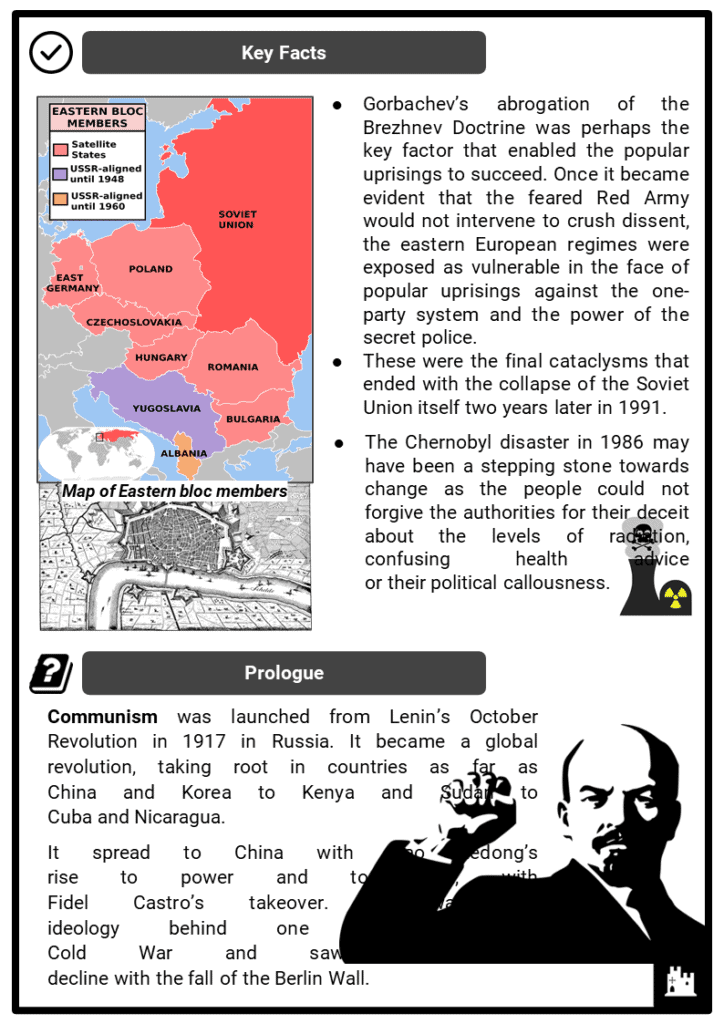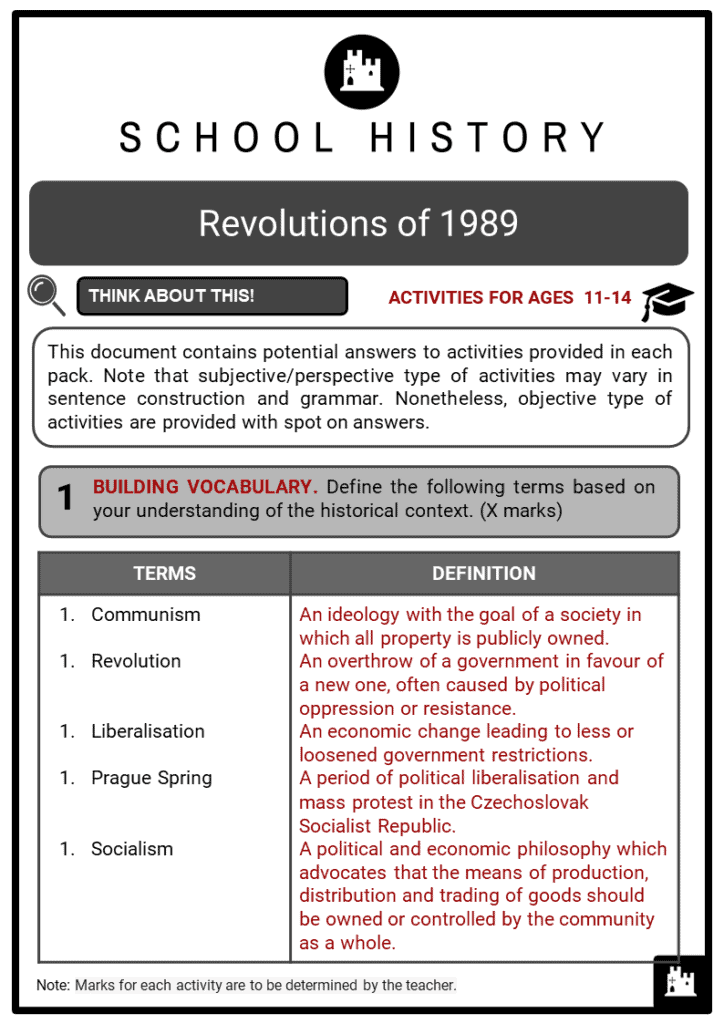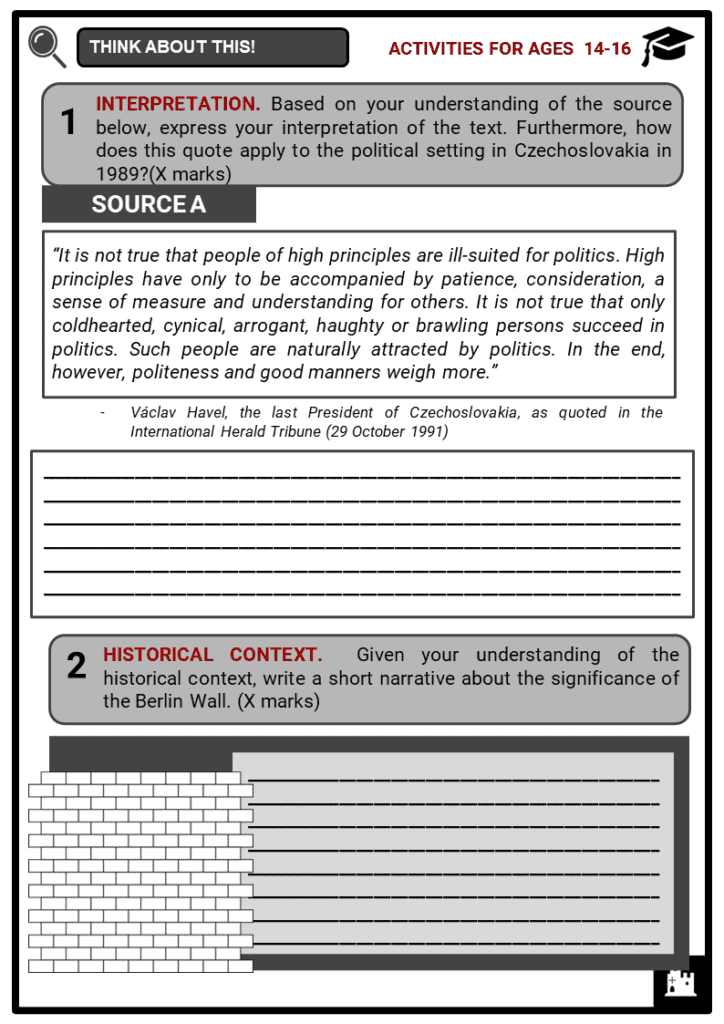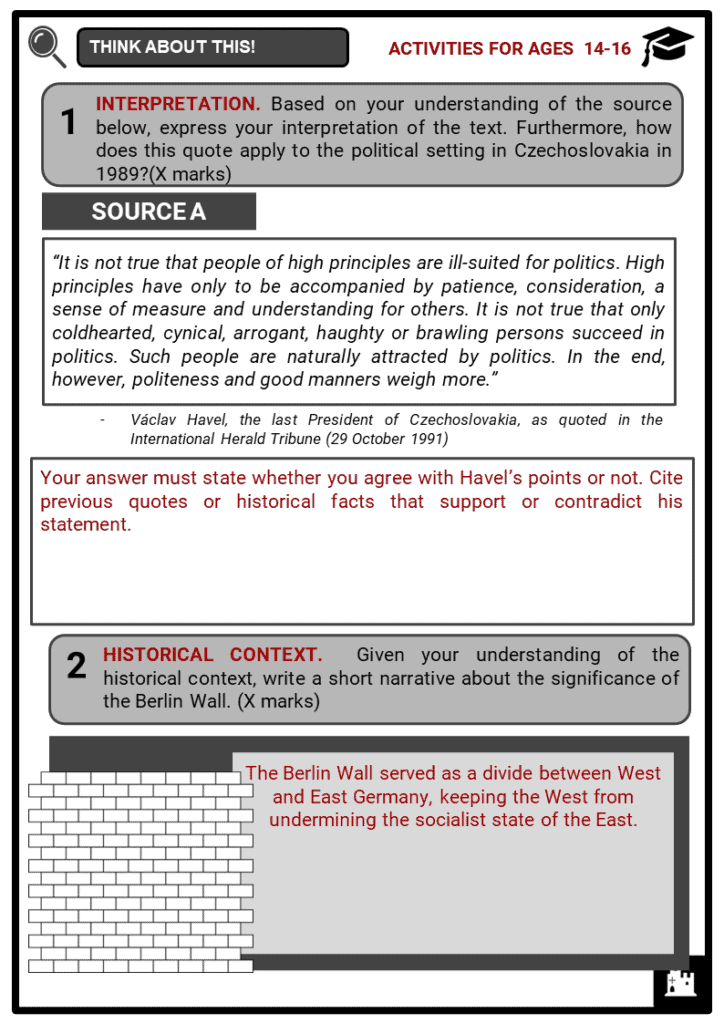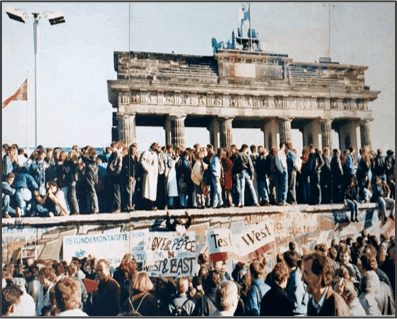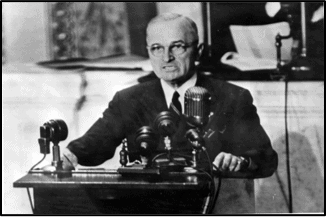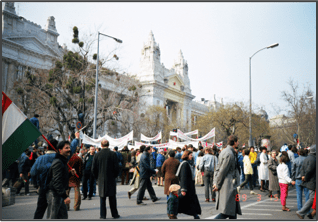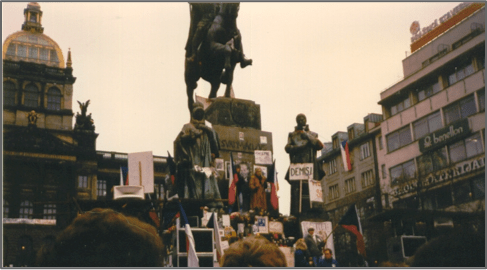Download Revolutions of 1989 Worksheets
Do you want to save dozens of hours in time? Get your evenings and weekends back? Be able to teach Revolutions of 1989 to your students?
Our worksheet bundle includes a fact file and printable worksheets and student activities. Perfect for both the classroom and homeschooling!
Table of Contents
Add a header to begin generating the table of contents
Summary
- The events that led to the Revolutions of 1989
- The countries involved in the Revolutions of 1989
- The key leaders involved in the Revolutions of 1989
- The pivotal events part of the Revolutions of 1989
- The aftermath of the Revolutions of 1989
Key Facts And Information
Let’s know more about the Revolutions of 1989!
- The Revolutions of 1989 refers to the collapse of communism in eastern Europe, the end of the period of the Cold War and the removal of the Iron Curtain between eastern and western Europe.
- Primarily it was the disavowal of communism by all of the eastern European states that were in the Soviet sphere of influence after World War II.
- The seeds of revolution were present from the very beginning, and the Hungarian Revolution of 1956 and the Prague Spring in Czechoslovakia in 1968 were the precursors to the Revolutions of 1989.
Key Facts
- Gorbachev’s abrogation of the Brezhnev Doctrine was perhaps the key factor that enabled the popular uprisings to succeed. Once it became evident that the feared Red Army would not intervene to crush dissent, the eastern European regimes were exposed as vulnerable in the face of popular uprisings against the one-party system and the power of the secret police.
- These were the final cataclysms that ended with the collapse of the Soviet Union itself two years later in 1991.
- The Chernobyl disaster in 1986 may have been a stepping stone towards change as the people could not forgive the authorities for their deceit about the levels of radiation, confusing health advice
or their political callousness.
Prologue
- Communism was launched from Lenin’s October Revolution in 1917 in Russia. It became a global revolution, taking root in countries as far as China and Korea to Kenya and Sudan to Cuba and Nicaragua.
- It spread to China with Mao Zedong’s rise to power and to Cuba, with Fidel Castro’s takeover. It was the ideology behind one side of the Cold War and saw a symbolic decline with the fall of the Berlin Wall.
- The ideology promoted classless, government-controlled society in which everything is shared equally.
- Vladimir Lenin installed the first communist government during Russia’s October Revolution.
- He then lost an election to the leftist Socialist Revolutionaries. Despite this he used military force to take over. It was during this period that the Red Terror, prisoner-of-war labour camps and other police state tactics, were established.
- The Red Terror was a Bolshevik campaign, which began in mid-1918, intended to intimidate political enemies through violence, arrest and execution.
- This inspired the Chinese to create the Communist Party of China in 1921. Three years later and Lenin died of natural causes in 1924, leaving Joseph Stalin, who had served as Lenin’s general secretary, to eventually take the official rule of the Soviet Union until his death in 1953.
- Under his regime, detractors were deported or imprisoned in labour camps, and, as part of the Great Purge, at least 1 million people were executed under Stalin’s orders.
- Through the years 1940–1979, communism or socialism was established by force or other methods in most of eastern Europe, the majority of Asia, some parts of Africa and very little in North America.
- In 1946, Prime Minister Winston Churchill made his famous “Iron Curtain” speech in Missouri. This alerted the world to the division between the Soviet Union and the western allies. Since the U.S.S.R. declared victory over Nazi Germany in World War II, the Cold War had begun.
- In 1947, President Harry S. Truman addressed Congress in what would come to be known as the Truman Doctrine, calling for the containment of communism, leading to U.S. entry into wars in Vietnam and Korea to prevent communist takeovers.
- This doctrine becomes the basis for the American Cold War policy.
- After a civil war in 1949, China’s Communist Party leader, Mao Zedong, declared his creation of the People’s Republic of China, leading the United States to end diplomatic ties with China for years. In 1950, after communist North Korea invaded South Korea, U.S. troops were forced to intervene in the Korean War, which would last until 1953 when North Korea,
China and the United
Nations signed an armistice agreement. - In 1959, Fidel Castro overthrew the corrupt Fulgencio Batista regime and Cuba became a communist state.
- In 1961, the famous Berlin Wall was erected. It was continuously guarded and acted as a barrier both physically and ideologically. It included guard towers and other defences.
Revolutions of 1989
- The revolution began in Poland with the creation of Solidarity, the workers’ movement which, ironically, challenged the communist government for authority. It’s considered to be the first movement in the Eastern bloc that wasn’t brutally suppressed.
- This delegitimised the communist claim as representatives of the people’s will. It continued with the Hungarian authorities when they decided to no longer interdict those seeking to leave the state by crossing the boundary between Hungary and Austria.
- This led to a flood of refugees from eastern Europe streaming into Hungary to escape to the West. The defining event was then the collapse of the Berlin Wall in East Germany, also because of people wishing to escape to the West.
- With the exception of Romania, the revolutions were largely peaceful as the governments put up little resistance to the clear will of the people and the democratic reforms. However, people still died for even attempting to cross the Berlin Wall, prior to 1989.
Liberalisation
- Several Eastern bloc countries had attempted some limited, economic and political reforms since 1950. The Hungarian Revolution in 1956 or the Prague Spring in 1968 are example of this. However, the advent of reform-minded Soviet leader Mikhail Gorbachev in 1985 signalled the trend towards greater liberalisation. In mid-1980, a younger generation of Soviet apparatchiks, led by Gorbachev, began advocating for fundamental reforms in order to reverse years of Brezhnev stagnation.
- The Soviet Union was facing a period of severe economic decline and needed western technology and credits to make up for its military among other things.
- The Chernobyl disaster in 1986 can be considered an example of a lack of better technology. The inadequately trained personnel, lesser knowledgeable people in positions of power and severe censorship by the Soviet Union all led not just to the disaster itself, but also to it being aggravated. The first signs of major reform came in 1986 when Gorbachev launched a policy of glasnost – openness – in the Soviet Union, and emphasised the need for perestroika – economic restructuring.
- In the summer of 1989, people that protested for weeks were attacked in China by the military, an action condoned by the communist Chinese government. The demonstrators were crying out for democracy in Beijing’s Tiananmen Square. The violence ended in hundreds to thousands of deaths. No official death toll has been released to this day.
- By the spring of 1989, the Soviet Union had not only experienced lively media debate, but had also held its first multi-candidate elections in the newly established Congress of People’s Deputies.
- Though openness and political criticism was advocated, it was still only permitted in accordance with the political views of the Communists. The general public was still threatened by secret police and political repression.
East to West
- Moscow’s largest obstacle to improve political and economic relations with the western powers remained the Iron Curtain that existed between the East and West. As long as the spectre of Soviet military intervention cast a shadow over eastern Europe, it seemed unlikely that Moscow could attract the western economic support needed to finance the country’s restructuring. Gorbachev urged his eastern European counterparts to imitate perestroika and glasnost in their own countries.
- However, while reformists in Hungary and Poland were encouraged by the force of liberalisation spreading from East to West, other Eastern bloc countries remained openly sceptical and demonstrated aversion to reform. Past experiences had demonstrated that although reform in the Soviet Union was manageable, the pressure for change in eastern Europe had the potential to become uncontrollable.
- These regimes owed their creation and means of survival to imitating Soviet-style totalitarianism, backed by Soviet military power and subsidies.
- Many believe that Gorbachev’s reform initiatives would be short-lived. Rulers such as Erich Honecker of East Germany, Todor Zhivkov of Bulgaria, Gustáv Husák of Czechoslovakia and Nicolae Ceausescu of Romania ignored the calls for change.
- However, an event helped to galvanise the spirit of liberation. Gorbachev visited the People’s Republic of China on the 15th of May, during the Tiananmen Square Protests of 1989, and attracted a lot of foreign news agencies to Beijing.
- The sympathetic portrayals of the protesters were viewed by many eastern Europeans.
- Zhao Ziyang, the Communist Party general secretary, had begun a radical economic reformation even earlier than the Soviets. He was open to political reform yet not at the cost of a potential return to the disorder of the Cultural Revolution.
- The reforms in Poland and Hungary were different, however. The Soviet Union slowly repealed the Brezhnev Doctrine in favour of a non-intervention to its Warsaw Pact allies, termed the Sinatra Doctrine in a jokey reference to the song “My Way”.
- Poland and Hungary became the first Warsaw Pact countries to break free of Soviet domination. The labour turmoil in Poland during 1980 influenced and helped create the formation of the independent trade union called Solidarity.
- Over time a man named Lech Wałęsa became a political force. On 13 December 1981, communist leader Wojciech Jaruzelski instituted a crack-down on Solidarity, declaring martial law in Poland.
- This action suspended the union and temporarily imprisoned
most of its leaders. Throughout the mid-1980s, Solidarity still
persisted but as an underground organisation. Until the
late 1980s, Solidarity grew strong to sufficiently enough frustrate Jaruzelski’s attempts at reform. Nationwide strikes in 1988 forced the government to open a dialogue with Solidarity. - In March 1989, both sides agreed to a bicameral legislature called the National Assembly. The already existing Sejm would become the lower house. The Senate would be elected by the people, and the presidency was given more powers.
- In April 1989, Solidarity was again legalised and allowed to participate in the parliamentary elections on 4 June 1989 which was coincidentally the same day as the Chinese protests in Tiananmen Square.
- Something that had never happened before occurred and surpassed all predictions. Members of Solidarity had captured all the seats that they were allowed to compete for in the Sejm, while in the Senate they won 99 out of 100 seats. Many prominent Communist candidates failed to gain even the minimum number of votes in order to gain the seats that were reserved for them. Thus, a new non-Communist government, the first of its kind in eastern Europe, was sworn into office in September 1989.
- Following Poland’s lead, Hungary was the next to achieve a non-communist government. Though Hungary had realised some lasting economic reforms and limited political liberalisation during the 1980s, major reforms could only occur after the replacement of János Kádár, the General Secretary of the Communist Party. He was replaced in 1988, and the Parliament adopted a “democratic package,” which included…
- trade union pluralism
- freedom of association
- freedom of assembly
- a new electoral law
- a radical revision of the constitution
- ...among other things.
- In October 1989, the Communist Party convened its last congress and re-established itself as the Hungarian Socialist Party, which still exists to this day. In a historic session from 16 to 20 October, the parliament adopted legislation providing for multi-party parliamentary elections and a direct presidential election. This legislation transformed Hungary from a People’s Republic to the Republic of Hungary. It guaranteed human and civil rights, and created an institutional structure that ensured separation of powers among the judicial, legislative and executive branches of government.
Domino Effect
- Through Hungary’s success, a reformed border was opened. This allowed for a growing number of East Germans to immigrate to West Germany via Hungary’s border with Austria. By the end of September 1989, more than 30,000 Germans had escaped to the West before the GDR denied travel to Hungary, leaving Czechoslovakia as the only neighbouring state where East Germans could travel.
- Many Germans tried to reach the West by occupying the West German diplomatic facilities in other eastern European capitals. The border to the CSSR was closed by the GDR.
- East Germans were robbed of their last chance to escape, and mass demonstrations began to occur in different cities, with eventually hundreds of thousands of people demanding political change.
- Gorbachev visited East Germany to mark the 40th anniversary of the German Democratic Republic, and urged the East German leadership to accept the reform. But Erich Honecker remained opposed to any internal reform, leading to him being deposed and replaced with Egon Krenz. The border to Czechoslovakia was opened again, and even more than this, the Czechoslovakian authorities let all East Germans travel directly towards West Germany, without further bureaucratic ado, thus lifting the Iron Curtain on 3 November.
- This led to many more Germans travelling to West Germany. The East German authorities couldn’t do anything anymore. Hundreds of thousands of people took advantage of the opportunity.
- By December, Krenz had been replaced. The Socialist Unity Party’s monopoly on power had ended with the eventual reunification of East and West Germany, which came into force on 3 October, 1990.
- The loss of such a strategically vital ally marked a dramatic shift in the Soviet superpower, and a fundamental paradigm change in international relations, which until 1989 had been dominated by the East-West divide running through Berlin itself.
- Followed by the events in Germany, Czechoslovakia’s Velvet Revolution overthrew the communist government. It was a nonviolent revolution, on the 17th of November 1989; riot police suppressed a peaceful student demonstration in Prague. This event sparked a series of popular demonstrations for a full month.
- While seeing the communist governments of other countries collapsing, the Communist Party of Czechoslovakia announced on 28 November that it would relinquish power and dismantle the single-party state.
- Alexander Dubček was elected speaker of the federal parliament on 28 December and Václav Havel the President of Czechoslovakia on 29 December 1989. Dubček and Havel were the two most trusted men in Czechoslovakia.
- Alexander Dubček had been the leader of the period of liberalisation known as the Prague Spring which led to the Soviet invasion in 1968, while the latter had been the leader of the Czech civil rights organisation, Charter 77. The federal parliament introduced key laws for promoting civil rights, civil liberties and economic freedom. The first free elections were scheduled for June 1990.
- However, a major consequence of the revolution was the Dissolution of Czechoslovakia. After the Velvet Revolution, the country divided into two states on 1 January 1993.
- The day after the Berlin Wall was breached, Bulgaria’s long-serving leader Todor Zhivkov was ousted, yet his departure was not enough to satisfy the growing pro-democracy movement.
- In November 1989, demonstrations on ecological issues were staged in Sofia, and these soon broadened into a general campaign for political reform. The Communists reacted by deposing the decrepit Zhivkov and replacing him with Petar Mladenov, but this gained them only a short respite. In February 1990 the party voluntarily gave up its claim on power and in June 1990 the first free elections since 1931 were held, who were won by the moderate wing of the Communist Party, renamed the Bulgarian Socialist Party.
- Unlike the rest of the revolutions, the one in Romania was the most violent. It can hardly be called a revolution, but rather an attack on the state. In November 1989, Ceauşescu prepared to go on a state visit to Iran, his security ordered the arrest and exile of a local Hungarian-speaking Calvinist minister, László Tőkés, who apparently offended the regime.
- A serious riot erupted with Timişoara being the first city to react, on 16 December. Returning from Iran, Ceauşescu ordered a mass rally for his support outside the Communist Party headquarters in Bucharest.
- However, he was shocked when the crowd booed as he spoke. He later learnt about the recent incidents. The demonstrations spread throughout the country, and some might have been staged.
- The military started to shoot the protestors, and then they began to shoot amongst themselves since they received different orders from different generals about possible spies. Not only this, but the generals were quickly dismissed from their ranks and replaced by others. No one knew who was in command anymore.
- Ceauşescu and Elena, his wife, fled from the Central Committee building in a helicopter, which took them to a different place than the one requested, and they were arrested.
- On Christmas Day, Romanian television showed the Ceauşescus facing a hasty yet clearly staged trial, and then they were quickly executed without having a chance to say a word.
Aftermath
- By the end of 1989, the revolts spread from one capital to another, ousting the regimes imposed on eastern Europe after World War II.
- These revolutions greatly altered the balance of power in the world and market. Gorbachev assumed that the communist parties could be reformed into more effective entities. On 3 December 1989, the leaders of the two superpowers declared an end to the Cold War.
- On 1 July 1991, the Warsaw Pact was officially dissolved.
- As the Soviet Union rapidly withdrew its forces from eastern Europe, the upheavals began reverberating throughout the Soviet Union itself.
- Agitation for self-determination led to Albania, Lithuania, Estonia, Latvia and Armenia declaring independence.
- Georgia and Azerbaijan followed quickly.
- Long-suppressed national sentiments of all peoples within the borders of the multinational Soviet state grew more and more.
- In September, the Baltic States were granted independence. On 1 December, Ukrainian voters approved independence from the Soviet Union in a referendum. On 26 December 1991, the Soviet Union was officially disbanded leaving China the world’s largest and most influential communist state.
Image sources:
- https://commons.wikimedia.org/wiki/File:West_and_East_Germans_at_the_Brandenburg_Gate_in_1989.jpg
- https://commons.wikimedia.org/wiki/File:Special_Message_to_Congress_on_Greece_and_Turkey_The_Truman_Doctrine.jpg
- https://commons.wikimedia.org/wiki/File:Nemzeti_%C3%9Cnnep_-_Szabads%C3%A1g_t%C3%A9r_1989.03.15_(4).jpg
- https://en.wikipedia.org/wiki/Revolutions_of_1989#/media/File:Prague_November89_-_Wenceslas_Monument.jpg


